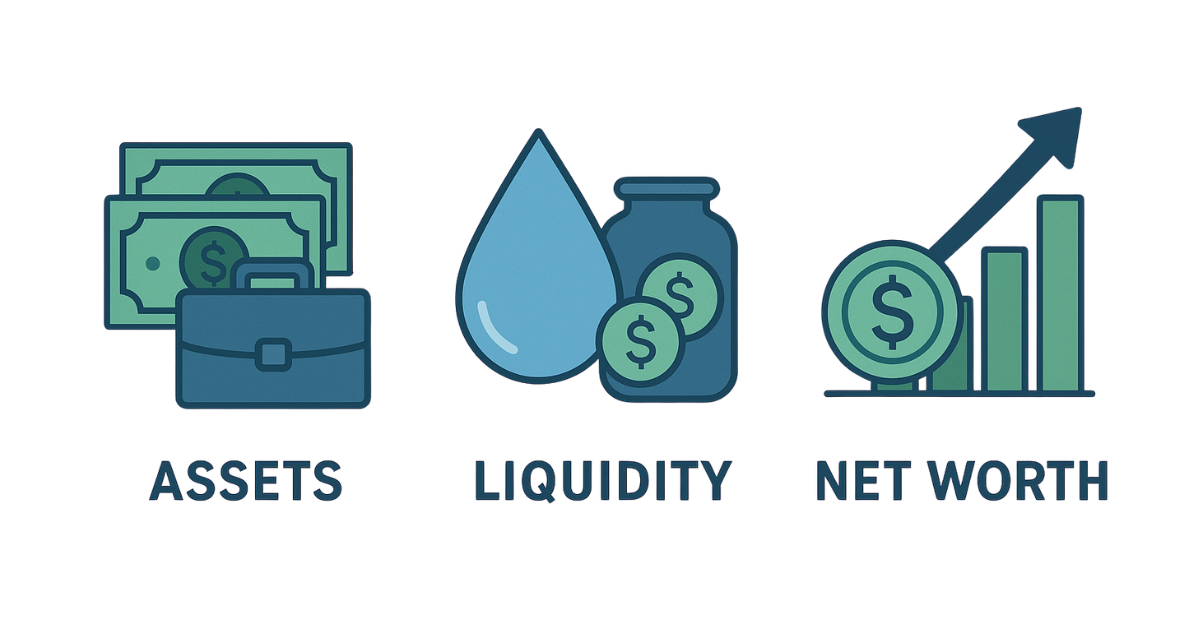Liquidity and Net Worth
 Facts, tips, & explanations on what marine lenders expect
Facts, tips, & explanations on what marine lenders expect
A basic definition of liquidity is the ability to sell an asset without losing much, if any, of its value.
Lenders want to see an applicant with liquid assets such as cash, stocks, bonds, and mutual funds that can easily be converted to cash within 30 days. These assets combined should show that you have the money for the down payment, sales/use tax on the boat if not included in the loan, and reserves set aside for loan repayment and living expenses should your income decrease unexpectedly. The standard down payment requirements range from 10 to 20 percent of the purchase price and it’s wise to have savings after the down payment of 6 to 12 months’ worth of total payments (home, auto, boat, etc.).
The main categories for liquidity are:
- Cash in the bank
- Stocks/bonds/mutual funds
- Retirement accounts, if you are 59 ½ or older
- Cash surrender value of life insurance
As they say “Cash is king!” Cash is simply the most liquid of all assets, as it loses no value and can pay debts directly. The lender will want to verify cash, so it needs to be on deposit in savings, checking, or money market accounts – not in the mattress!
Stocks, bonds, and mutual funds are fairly liquid, as the current market value can be confirmed with brokerage statements and these marketable securities can be sold easily within 30 days.
Retirement accounts may be considered liquid if you are 59 ½ and can withdraw without a penalty.
Lastly, you may have a cash surrender value on a life insurance policy, which is the amount the insurer would pay you if you were to cancel your policy today.
Liquidity is included in your assets when calculating your net worth. Your total assets, less your total liabilities, equal your personal net worth. The lender will review your personal financial statement to be comfortable the market value placed on your assets can be verified or substantiated. The debts are generally listed on the credit reports obtained by the lender. Your total net worth should be twice what you wish to borrow.
Assets include:
- Liquid assets (cash, marketable securities, cash surrender value of life insurance)
- Retirement funds (may be considered liquid if you are over 59 ½ years)
- Real estate
- Loans receivable (if documented and aged)
- Vehicles
- Closely held companies – though these are difficult to value and generally not considered by marine lenders
- Personal effects, jewelry, furnishings, etc. – again generally not considered by marine lenders
Liabilities are any short or long-term debt:
- Credit cards, revolving accounts
- Unsecured loans
- Real estate mortgages
- Vehicle loans
- Personal loans
- Student loans
The personal financial statement is an important tool, as it gives a snapshot of your financial condition, your savings and spending habits, and your financial positioning for the future. It is well worth the time and effort to be sure you provide a complete, current, and accurate personal financial statement with your yacht loan application package.
Contact a Sterling Acceptance professional today to assist you in getting your
financing in order. We have been in business since 1987 and have weathered several economic cycles. We have long-standing relationships with many recreational lenders
and can provide guidance and expertise to get you on your way! We are dedicated
to providing quality and knowledgeable service to all customers and colleagues
and hope to work with you soon!